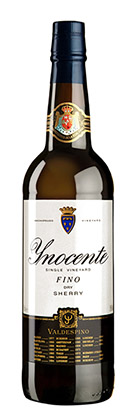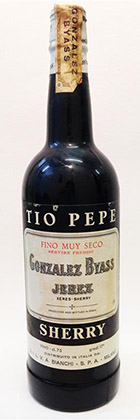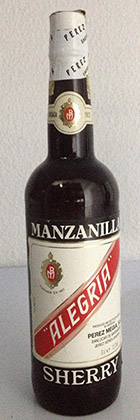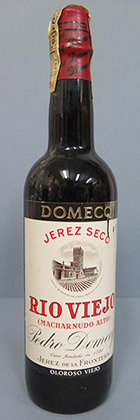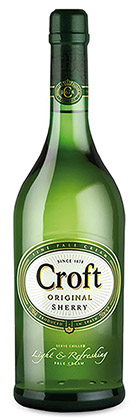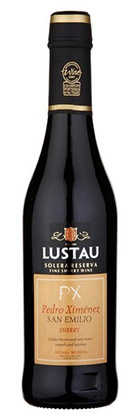Wines of Jerez de la Frontera
There are little bars in Jerez where the tapas, the morsels of food without which no Jerezano puts glass to mouth, constitute a banquet. From olives and cheese to prawns, to raw ham, to peppery little sausages, to lobster claws, to miniature steak streaked with amber onions, the path of temptation is broad and long.
Your copita, a glass no more imposing than an opening tulip, fills and empties with a paler wine, a cooler wine, a more druggingly delicious wine than you have ever tasted. It seems simultaneously dry as dust and just teasingly sweet, so that you have to sip again to trace the hint of grapes.
It comes in half-bottles, kept on ice. A half-bottle is reckoned a reasonable drink to spin out over an hour or two among the tapas. And in half-bottles it stays as fresh as it was when it left the bodega - for no bottle is left half full.
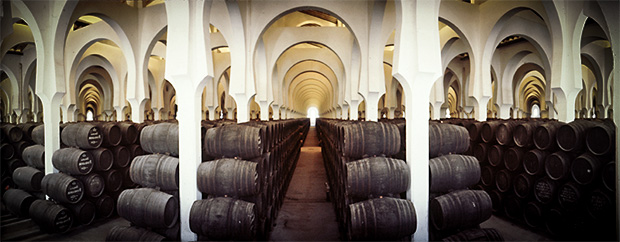 The most celebrated sights of Jerez are the bodegas of the shipping houses. Their towering whitewashed aisles, dim-roofed and crisscrossed with sunbeams, are irresistibly cathedral-like. In them, in ranks of butts sometimes five tiers high, the new wine is put to mature. It will not leave until it has gone through an elaborate blending process which is known as the solera system. Only the occasional wine of notable distinction is sold unblended as an ‘almacenista’.
The most celebrated sights of Jerez are the bodegas of the shipping houses. Their towering whitewashed aisles, dim-roofed and crisscrossed with sunbeams, are irresistibly cathedral-like. In them, in ranks of butts sometimes five tiers high, the new wine is put to mature. It will not leave until it has gone through an elaborate blending process which is known as the solera system. Only the occasional wine of notable distinction is sold unblended as an ‘almacenista’.
The first job when the new wine has got over its fermentation is to sort it into categories; better or worse, lighter or more full-bodied. Each wine is put into the criadera (nursery) appropriate to its character. Each character or category of wine has a traditional name.
From the criaderas the shipper tops up a number of soleras, consisting of perhaps 20, perhaps several hundred butts; each wine going into the solera nearest to its character. As new wine goes into butts at one end of the solera, mature wine for blending is drawn from the other. The solera system is simply a progressive topping-up of older barrels from younger of the same style, so that wine is continuously being blended, and hence always emerges tasting the same.
 The solera wines are the shipper’s paintbox for blending the house brand, or for brands ordered by other wine merchants for sale under their own names. Most sherry when it is sold is a blend of several, sweetened and strengthened to the consumers’ taste. The few ‘straight solera’ sherries which are sold tend to be unsweetened and therefore wines for the connoisseur.
The solera wines are the shipper’s paintbox for blending the house brand, or for brands ordered by other wine merchants for sale under their own names. Most sherry when it is sold is a blend of several, sweetened and strengthened to the consumers’ taste. The few ‘straight solera’ sherries which are sold tend to be unsweetened and therefore wines for the connoisseur.
The categories into which all young sherry is classified begin with fino. Finos are the best; delicate and distinctive wines which will need a minimum of blending and sweetening. They will age excellently, but also have qualities that make them perfect young. Their strong individuality comes from an unusual form of yeast, flor, which forms on their surface. Tasted from the butt, when the capataz of the bodega thrusts a long-handled venencia through the flor into the pale wine to bring out a sample, they have a magical new-bread freshness and vitality; they are, beyond question, Spain’s finest wine of all.
Amontillado - a softer, darker wine - comes next. The best amontillados are old finos, finos which did not quite have the right freshness to be drunk young, although the name is often used in commerce for middle-character blends of no real distinction. Great amontillado soleras (for only from the solera can you taste the real individuality of the wine) are dry and almost stingingly powerful in flavour, with a dark, fat, rich tang - but words fall short.
Oloroso is the third category. Wines which have great possibilities for ageing but are a little heavy at first go into this solera. They are the basis for the best sweet sherries - often known as milk or cream, which suggests a silky fatness.
Sweetening wines and colouring wines for blending are made separately from sun-dried grapes and kept in their own soleras. Lesser wines which go into cheaper blends are known as rayas, and a final rare character, something between fino and oloroso, as palo cortado.
In addition there are the manzanillas of Sanlucar de Barrameda. Manzanilla finos are some of the must delicate and lovely of all, always with a faintly salty tang which is held to come from the sea. A manzanilla amontillado is rare, but can be exquisite, salty and brown as burnt butter.
No blend, medium-sweet or sweet as most blends are, can compare with these astonishing natural sherries. They are as much collectors’ pieces as great domaine-bottled burgundies.

